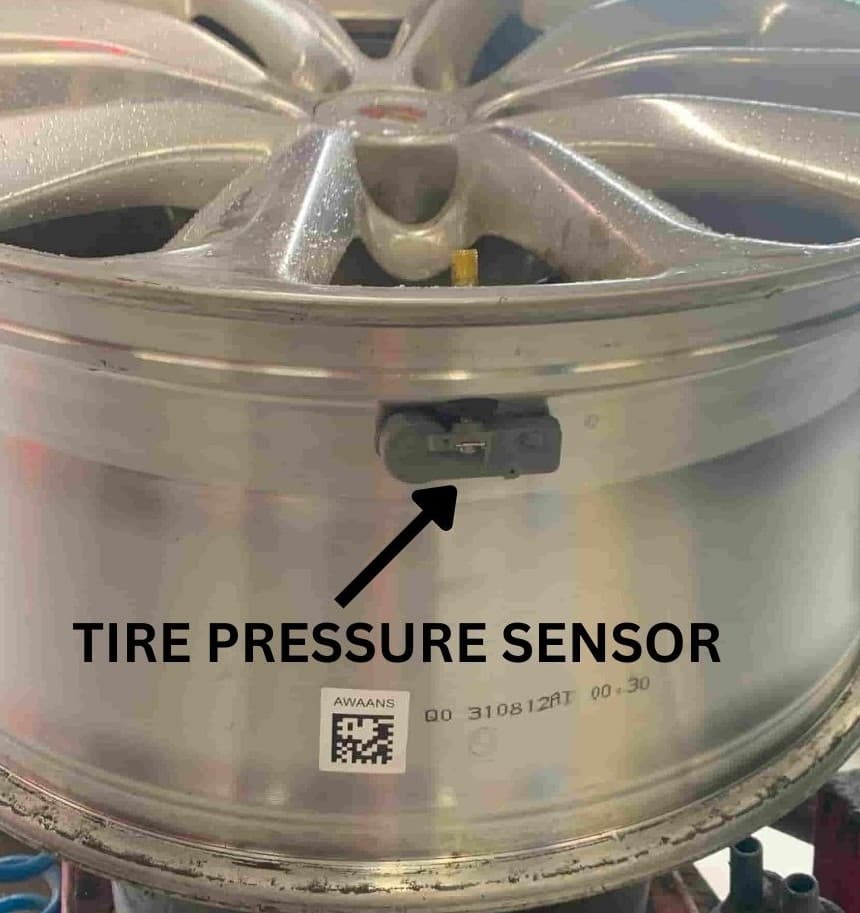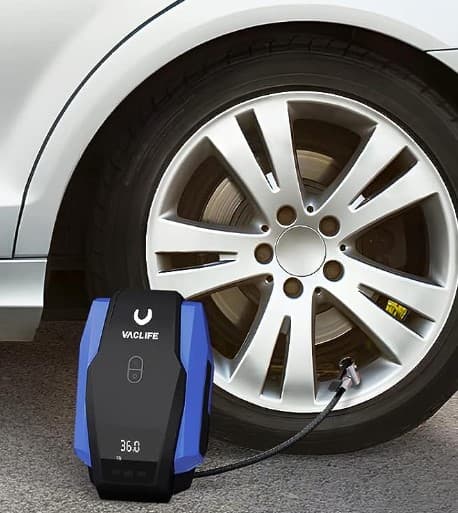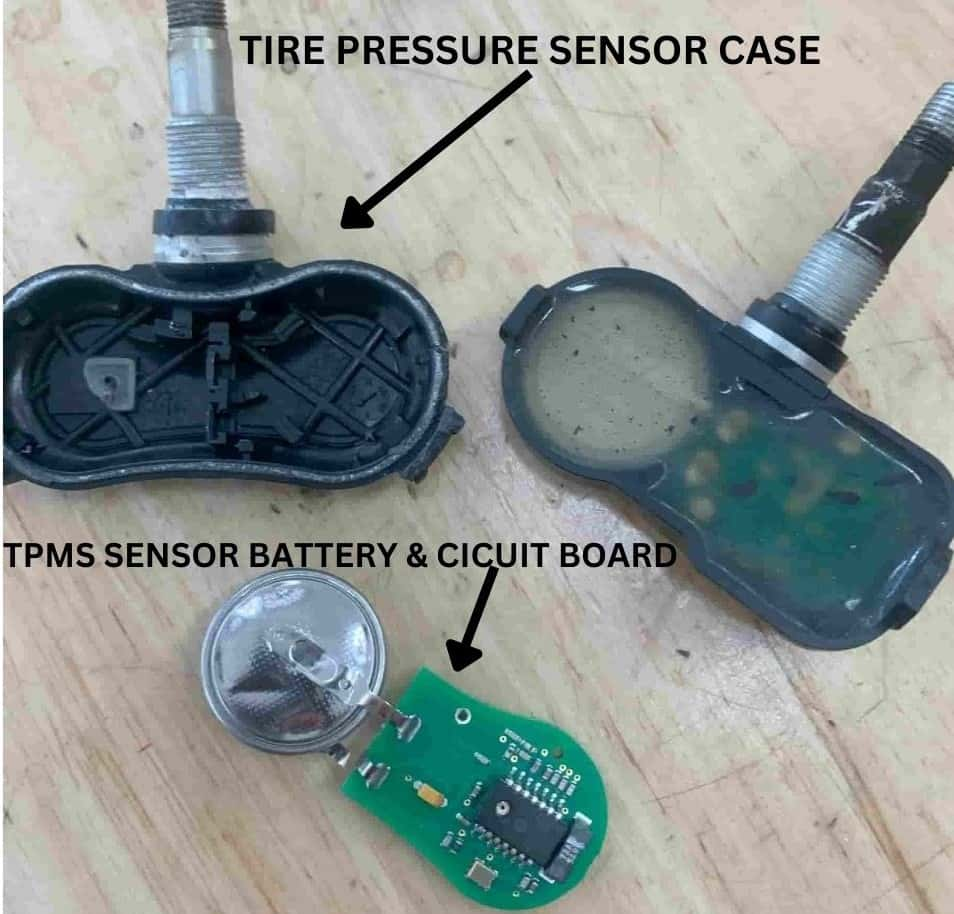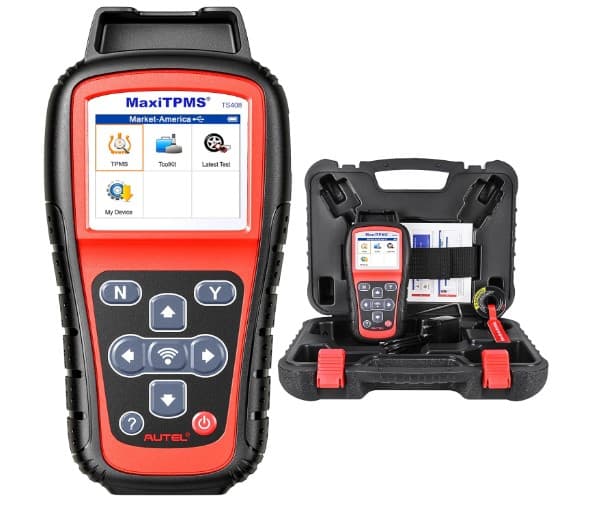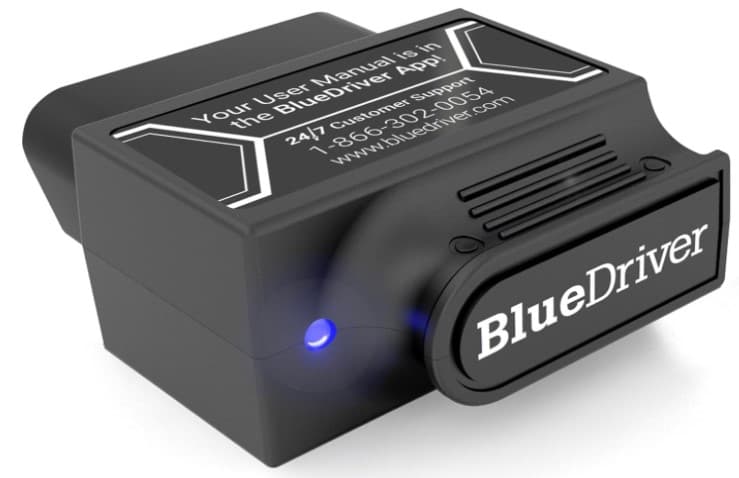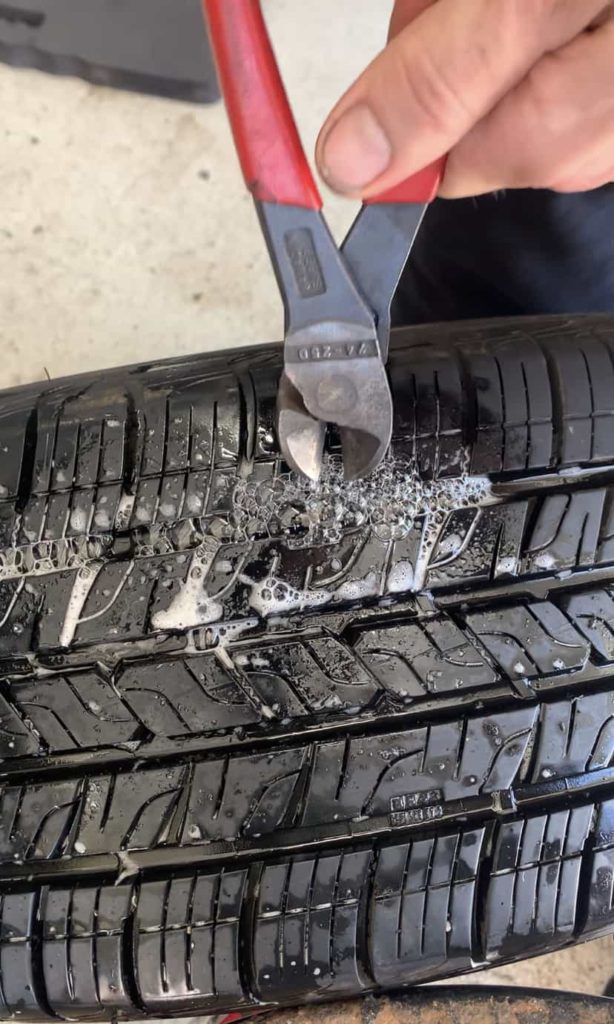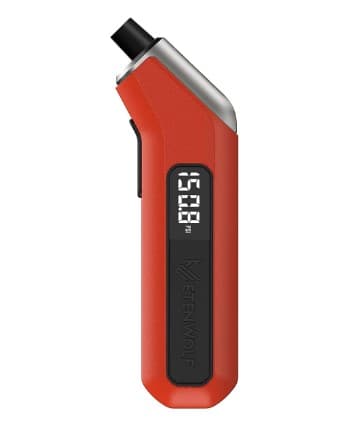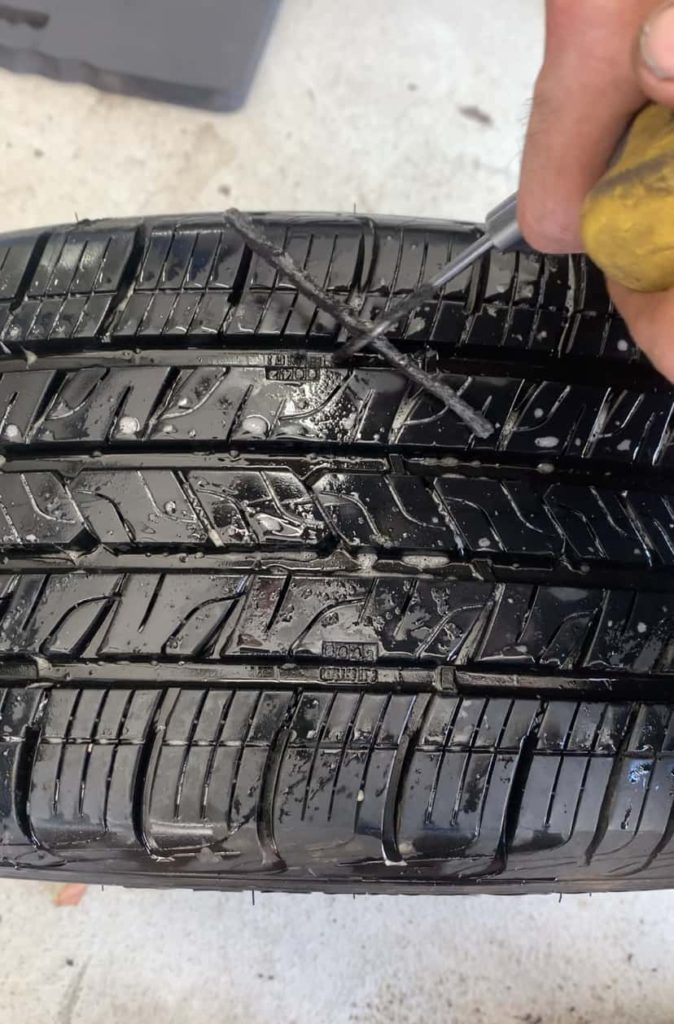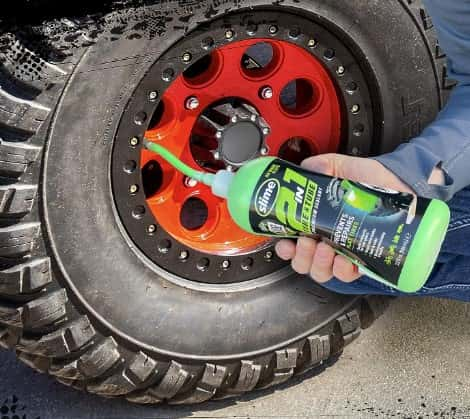What is the Dodge Challenger Tire Pressure Monitoring System?
The Dodge Challenger TPMS (tire pressure monitoring system) is a system made up of tire pressure sensors, a TPMS receiver module, the Dodge Challenger main computer (ECM) and low pressure warning messages. All of these different pieces of the system work together to report the current tire pressure and to warn the driver when the pressure drops below a certain threshold.
How Does the Dodge Challenger TPMS Work?
Tire Pressure Monitoring Systems (TPMS) are designed to ensure the safety and longevity of your tires by monitoring their pressure. Let’s break down how the Dodge Challenger TPMS works:
Tire Pressure Sensors: Hidden within each tire of the Dodge Challenger, these are vital components. Attached to the base of the valve stem, these sensors constantly monitor the air pressure and temperature of the tire. The essential part of the sensor is a circuit board with an antenna, powered by a battery, all encased in a plastic cover.
Data Transmission: These sensors wirelessly send real-time pressure and temperature data to the car’s computer system. This transmission occurs using radio waves, specifically on the 315 Mhz or 433 Mhz frequency bands.
TPMS Receiver Module: Think of this module as the ‘listener’. It catches the data sent by the sensors, processes it, and then funnels it to the Challenger’s main computer, the ECM.
Dodge Challenger ECM (Engine Control Module): This is the brain of the car. The ECM assesses the data, checking if the tire pressure aligns with the recommended standards set for the Challenger.
Low Pressure Warning: If the ECM senses a drop in pressure below the safe limit, it springs into action. The dashboard displays a low-pressure warning light, coupled with an audible chime. Not only that, the display will specifically indicate which tire is problematic and the exact pressure it needs: “Tire Low Inflate to XX PSI”.
Self Diagnostic Function: This feature ensures that the TPMS itself is in top-notch condition. If a sensor isn’t communicating properly with the ECM, the dashboard will display a flashing low tire pressure indicator and a “SERVICE TPM SYSTEM” message.
How to Reset the Dodge Challenger Tire Light
Park the Dodge Challenger on flat ground.
Wait for the tires to be cold and then inflate all four tires to the specified pressures.
Drive the Dodge Challenger for a minimum of 20 minutes at speeds exceeding 15 Mph (24 km/h).
How to Deactivate the Dodge Challenger TPMS
If you want to deactivate the tire pressure monitoring system on the Dodge Challenger, you’ll need to replace all 4 wheels with wheels that do not have tire pressure sensors in them. When the TPMS is deactivated the tire light will turn off but you will have (~) dashes instead of tire pressure values on the information display. This is how:
Swap all 4 wheels and tires with wheels that do not have TPMS sensors in them.
Drive your Dodge Challenger for at least 20 minutes at speeds over 15 Mph.
The tire pressure system will make a chime sound.
TPMS warning light (yellow exclamation point) will flash on and off for about 75 seconds and then stay on.
A message on the Dodge Challenger information display screen will read “SERVICE TPM SYSTEM” and dashes (~) will replace tire pressure values.
Turn the engine and power OFF.
Turn the engine and power ON.
After cycling the engine, you will see the “SERVICE TPM SYSTEM” message will be gone but the dashes (~) will replace the tire pressure values.
Reactivate the Dodge Challenger TPMS
Put the OEM wheels and tires with the OEM tire pressure sensors back on the Dodge Challenger
Drive the Challenger for up to 20 minutes at a speed above 15 mph (24 km/h).
The tire pressure system will make a chime sound.
The tire pressure system will blink on and off for about 75 seconds (yellow exclamation mark) and then stay off.
The information display screen will say “SERVICE TPM SYSTEM”.
The current tire pressure will be displayed again instead of dashes (~).
Turn the ignition on and off.
Drive the Dodge Challenger.
2023 Dodge Challenger Tire Pressure
TIRE SIZE | FRONT PSI | REAR PSI |
235/55R18 | 32 | 32 |
235/55R19 | 32 | 32 |
275/40R20 | 32 | 32 |
245/45R20 | 32 | 32 |
What Triggers the Dodge Challenger's Low Tire Pressure Indicator?
Under-inflated tires
Over-inflated tires
Tires leaking air
Missing tire pressure sensors
Worn-out or dead TPMS sensor battery
Issues with TPMS receiver or ECM
Electromagnetic interference
Changes in weather or altitude
Vehicle weight overloading
Using tire chains
Excessive window tinting
Changing road surface temperatures
Tires with punctures or other damage
Using inconsistent tire sizes
Wheel misalignment
Defective TPMS software
Rapid temperature drops
Physical impacts (e.g., hitting curbs or potholes)
Improper tire installation
Not resetting TPMS after tire changes
Dodge Challenger Tire Pressure Sensor Batteries
Each wheel of the Dodge Challenger features a tire pressure sensor, made up of a compact circuit board, an antenna, and a non-replaceable, non-rechargeable silver-oxide battery directly integrated with the circuit board. This means when the TPMS sensor battery is low or depleted, the entire sensor must be replaced with a new one. Typically, the longevity of tire pressure sensors in a Dodge Challenger ranges between 5 to 10 years, or approximately 100,000-150,000 miles of usage
Troubleshooting the Dodge Challenger Low Tire Pressure Light
The standard Dodge Challenger tire pressure reset procedure will not always get the tire light to turn off. When the tire light is on, there is a reason. Finding this reason comes down to trial and error, trying different solutions until one works.
SOLUTION 1: IS THERE A TIRE THAT'S DEFLATING?
If your Dodge Challenger tire light comes on while driving, pull over and check the air pressures manually of each tire. Once you find the culprit (tire low on air), follow these steps:
Inflate the problem tire to the recommended 32 Psi and check and adjust the other 3.
Drive your Challenger for at least a few minutes exceeding 15 mph.
The tire light will turn off.
⏩ ANSWER: Usually when one out of four tires is low on air compared to the others, this indicates a tire leak. If the low tire pressure alert turns off after inflating and driving the Challenger you now know that the low pressure was the cause. If the tire light turns back on after it went off, double check the air pressures. If the same tire is low on air again, you have a leak. Solution 6 has instructions on how to find a tire leak.
SOLUTION 2: REMOVING FAULT CODES FROM THE DODGE CHALLENGER ECM
The Dodge Challenger ECM records and keeps every low tire pressure alert in its memory. If you want to attempt to erase or clear this memory you can essentially force the ECM to reboot. Try this:
Turn the engine and all electronics of the Dodge Challenger off. This includes radio, lights, etc..
Open the hood of the car and loosen and disconnect the negative terminal from the 12 volt battery.
Let the car sit for a few minutes and then reconnect and tighten the terminal back onto the negative side of the battery.
We recommend driving the Dodge Challenger after disconnecting the battery for about half an hour at highway speeds.
⏩ WHAT TO LOOK FOR: After the power is connected back to the Challengers ECM, the tire light will turn off. If the low tire pressure warning turns back on while or after driving, this suggests that you either have a tire leaking air or a tire pressure sensor battery is low or dead. Follow the next solution to learn how to check each tire pressure sensor’s functionality.
SOLUTION 3: DIAGNOSING TIRE PRESSURE SENSORS WITH A TPMS PROGRAMMING TOOL
When none of your tires are low on air or leaking air but the low tire pressure light is still on, this implies a faulty or malfunction tire pressure sensor in one or more of the tires. To test each sensor you will need a TPMS programming tool or an OBD2 scan tool. The scan tool will only tell you which wheel is causing the diagnostic trouble code, the TPMS programming tool will tell you which wheel is causing the DTC and why. This is how to test each sensor with a TPMS programming tool:
Connect the TPMS programming tool to the car’s OBD2 port and follow its on screen instructions.
Start with the front left tire (driver side front) and put the tool as close to the tire pressure valve/sensor as possible and select the “test” or “trigger” function on the tool.
The tool will test the sensor and then direct you to move onto the next sensor. Always test the sensors in the order the tool requests.
⏩SUMMARY: After finishing testing each of the four TPMS sensors, the TPMS programming tool will provide you with a summary of its results. If the tool cannot test a tire pressure sensor, gives out of whack readings (ex: tire temperature -35 degrees), or claims a battery is low or depleted, that sensor needs to be replaced.
SOLUTION 4: BRINGING A NON-RESPONSIVE TPMS SENSOR BACK TO LIFE
Sometimes the tire light will turn on because a tire pressure sensor is dormant. If the tire pressure sensor battery is not the issue, try this:
Deflate the problematic tire by 15-20 Psi.
Inflate the tire back to its recommended pressure plus an additional 5 Psi. (if its supposed to be at 32 Psi, set it to 37 Psi)
Drive the Dodge Challenger at speeds exceeding 15 Mph.
Readjust the tire pressure back to the recommended pressure.
⏩OUTCOME: We suggest attempting this process if the standard tire pressure reset procedure is unsuccessful.
SOLUTION 5: INCONSISTENT ILLUMINATION OF THE TIRE LIGHT
If you notice your Dodge Challenger low tire pressure light is turning on and off by itself, the weather is usually to blame. A change in air temperature is a very common cause for the low tire pressure light to turn on. The standard rule of thumb states that for every 12 degree change in air temperature the tire pressure changes by at least 1 Psi in the same direction. This means that if the air temperature changes from 80 degrees to 40 degrees, the tires will lose about 4-5 Psi, causing the low tire pressure light to activate. Then, as you drive and the temperature increases, the tires heat up and the air pressure inside them increases which in turn deactivates the low tire pressure light.
⏩THE ANSWER: We obviously cannot control the weather but what you can do is set and adjust the tire pressures when the tires are cold. The tires are in a cold state when the Challenger has not been driven for at least 3 hours. This is the only way to set your tire pressures as accurately as possible, which in turn will cause the changes in weather to have less of an effect on the tire pressures.
SOLUTION 6: DETERMINING THE ORIGIN OF THE TIRE'S AIR LOSS
To pinpoint the origin of a leaking tire you will need a few things: a tire inflator, a spray bottle, water, and soap.
How to locate the air leak:
Mix the water and soap (dish detergent works great) into the spray bottle.
Fill the leaking tire to at least 32 Psi.
Spray the tire with the mixture.
Inspect the tire thoroughly while looking for small air bubbles.
⏩WHAT’S NEXT: When you find the air bubbles, trace them back to the source. The source is the puncture location.
COMMON DODGE CHALLENGER TIRE PRESSURE QUESTIONS
MANAGING TIRE PRESSURE SENSORS WHEN SWITCHING WHEELS OR TIRES
When you swap or replace the tires of your Dodge Challenger, follow the TPMS reset process. On the other hand, when you replace the wheels or rims, the original tire pressure sensors need to be swapped to the new wheels or new TPMS sensors need to be installed on the new wheels. You will need to program the new sensors to the Challengers ECM after installation.
UNDERSTANDING ALTITUDE IMPACTS ON TIRE PRESSURE IN A DODGE CHALLENGER
When a Dodge Challenger experiences shifts in altitude, the tire pressure is inevitably impacted due to the changes in atmospheric pressure. Specifically, for every 1,000 feet increase in altitude, tire pressure can decrease by approximately 0.5 psi due to the lesser pressure exerted by the atmosphere at higher elevations. Consequently, if you ascend from a sea-level city to a mountainous area sitting at 6,000 feet, your tire pressure could potentially drop by around 3 psi.
CAN YOU DRIVE SAFELY WITH THE TIRE LIGHT ACTIVATED?
When the tire light of your Dodge Challenger turns on, pull over and find out why. Is the tire pressure low? Is the tire pressure fine but the tire light is still on? If the tire pressure is correct yet the light is still on, this means one or more TPMS sensors are not communicating with the Challengers ECM. Driving with low tire pressure is not safe for the vehicle or its passengers so we suggest going through the listed solutions above and find out what the problem is.
HOW MANY MILES CAN YOU DRIVE WITH THE TIRE PRESSURE LIGHT ON?
Driving with the low tire pressure light on is inherently risky to both the car and the people in it. There is no set number of miles or hours you can or cannot drive with the low tire pressure light on because it depends on a few things. If the tire pressure is low then the tires need to be inflated before you continue driving. If the tire pressure is correct but the tire light is still on, this means there is a TPMS malfunction. There is no safety risk in continuing driving with a TPMS malfunction besides the fact that you do not know what the current air pressure is in the tires.
WHY IS THE DODGE CHALLENGER TIRE LIGHT FLASHING?
The tire light flashes when there is a communication error between tire pressure sensor and the Dodge Challengers TPMS receiver module or ECM. This is called a TPMS malfunction. It is not an air pressure issue. For example, the spare tire does not have a tire pressure sensor in it so when you drive with the spare installed, the ECM and TPMS receiver module does not have a sensor to communicate with. This will cause a TPMS malfunction. This will also occur when a tire pressure sensor is low or has run out of battery power.
WHEN SHOULD YOU USE AND NOT USE TIRE PLUGS?
I have found tire plugs to be very reliable in fixing tire punctures on the tread of a tire. Do not use them if the tire tread is very worn or on the sidewall of a tire.
ARE TIRE SENSORS AT RISK FROM TIRE SEALANTS?
Tire sealants such as fix-a-flat or slime are great in an emergency situation but they can actually cause damage to the tire pressure sensors as well as make the tire imbalanced.
Everything in this article is applicable to all Dodge Challenger models and versions including the Dodge Challenger SXT, GT, R/T, SRT, SCAT PACK, AND HELLCAT.
Please note that this blog post contains Amazon affiliate links. This means that if you make a purchase through one of these links, we at TPMSRESET.COM may earn a small commission at no extra cost to you. We only recommend products that we personally use and believe in. Thank you for supporting us.

